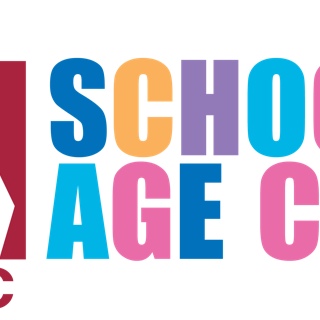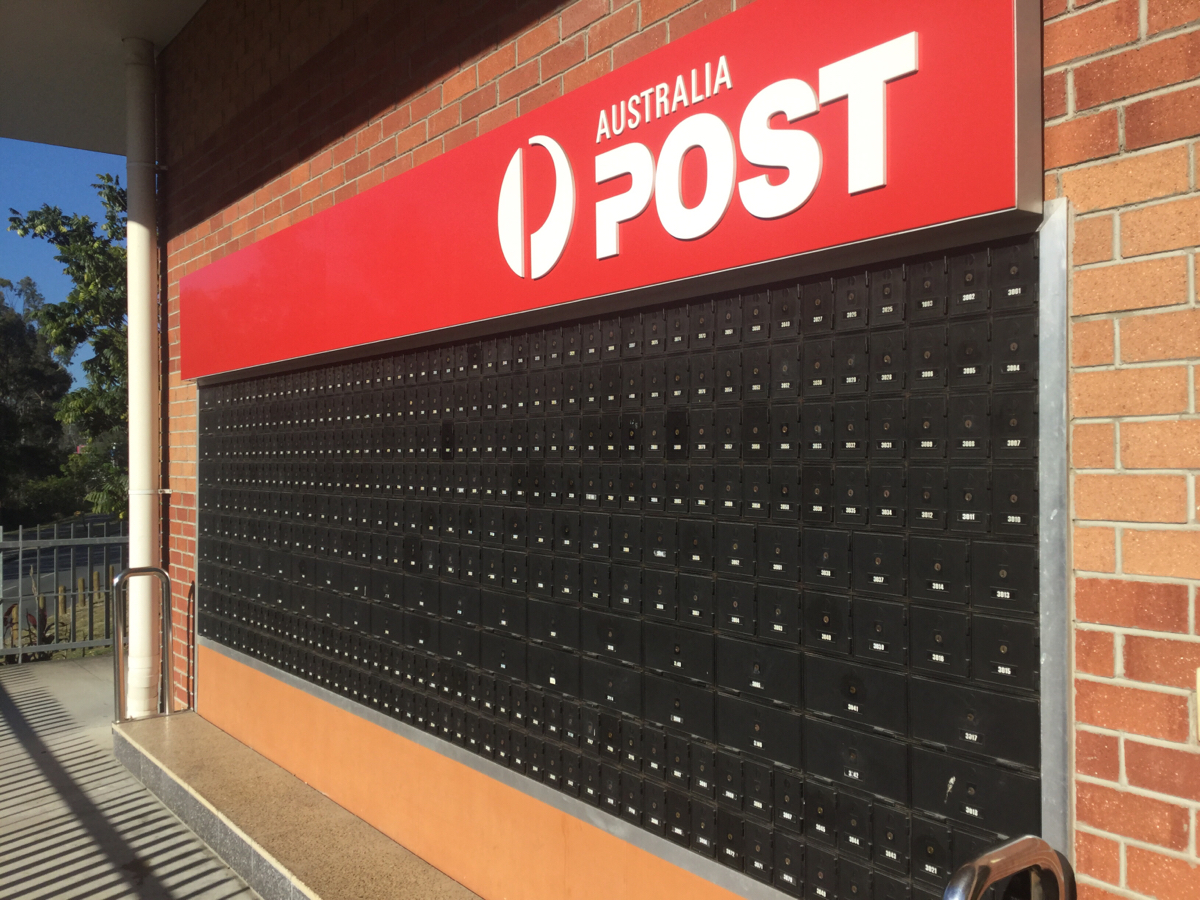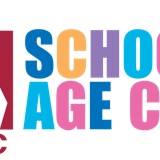Information
-
Document No.
-
Audit Title
-
Client / Site
-
Conducted on
-
Prepared by
-
Location
-
Personnel
-
Service Overview
Quality Area One: Educational Program and Practice
-
Law 168
Regulations 73; 74; 75; 76 and 254
Policies: 2.8; 2.11; 3.1; 3.2; 3.3; 3.8; 3.9; 3.10; 3.13; 6.2.
Standards: 1.1; 1.1.1; 1.1.2; 1.1.3; 1.1.4; 1.1.5; 1.1.6; 1.2; 1.2.2;
2.1.1; 2.1.2; 2.1.3; 2.2; 2.2.2; 2.3.1; 2.3.2;
3.1; 3.1.1; 3.1.3; 3.2; 3.3
4.1; 4.1.1; 4.2.1
5.1; 5.1.2; 5.1.3; 5.2; 5.2.1; 5.2.4;
6.1; 6.1.1.1; 6.1.2; 6.1.3; 6.2; 6.2.1; 6.3; 6.3.2; 6.3.3
7.1.1; 7.1.2; 7.1.4; 7.2.1; 7.2.3; 7.3.1; 7.3.2; 7.3.4 7.3.5 -
Information gathered through conversations with Educational Leader
-
How is your program organised to maximise opportunities for each child's learning to ensure children's interests are the base of the program?
-
How are you and your Educators focused, active and reflective in designing and delivering the program
-
How are the Principles and Practices from My Time, Our Place reflected in your program?
-
How is reflection on the outcomes undertaken at your Service?
-
How is critical reflection on children's learning and development gathered and how is this knowledge used to enhance the program design and delivery?
-
How do you communicate the learning outcomes for children to the families at your Service?
-
How is information about cultures, community and their families at your Service gathered and used in the program?
-
How are families, children and staff told about the routines at your Service?
-
How do you document each child's program and progress and how do you make it available to families?
-
Do you have children with additional needs or requirements at your Service and how/what documentation do you have and how is this shared with your staff?
-
What is your Service's program cycle and how are your staff educated on this?
Quality Area One - Observations of practices in Educational Program and Practices
-
Provide evidence of where the service is meeting or not meeting the statements listed.
-
Children explore aspects of identity through role play
-
Children express their opinions and make choices to resolve problems?
-
Children work collaboratively with others.
-
Educators and children engaging in activities.
-
Educators talking to children about concepts such as sharing
-
Educators encouraging children to make choices and decisions.
-
Educators extending children's communication by providing opportunities for children to express ideas.
-
Planning opportunities for children to relax through play and leisure.
-
Educators making use of spontaneous "teachable moments" to extend children's learning.
-
Including children's diverse experiences, expectations and skills in the program.
-
Educators collaborating with children about routines and procedures.
-
Educators noticing and listening carefully to children's concerns and discussing fair and unfair behaviour.
-
Notes:
Quality Area Two Children's Health and Safety
-
Law 174
Regulations: 77; 78; 79; 80; 81; 82; 83; 84; 85; 86; 87; 89; 90; 91; 92; 93; 94; 95; 96; 97; 98; 99; 100; 101; 165; 167; 168; 169.
Standards: 1.1.5;
2.1.1; 2.1.3; 2.1.4; 2.2.1; 2.2.2; 2.3.1; 2.3.2; 2.3.3
3.1.1; 3.1.2; 3.1.3; 3.2.1; 3.3.2
4.1; 4.2.1
5.1.2; 5.1.3
6.1,1; 6.1.3; 6.2.2; 6.3.3
7.1; 7.1.2; 7.2.2; 7.3.1; 7.3.2; 7.3.3; 7.3.5 -
How is the Service's menu developed and how is it assessed against the relevant dietary guidelines - what is used?
-
How are physical activities incorporated in the program for children at the Service and how/who comes up with these activities?
-
How are staff educated in relation to their roles and responsibilities to child protection and what evidence do you have?
-
How often are the Service's Policies and Procedures reviewed and how are parents advised of this and what steps does the Service take in relation to this?
-
How is information about a child's individual health requirements communicated to staff at your Service?
-
Does your Service have individual medical plans and medication authorisation for children requiring medication?
-
How do you plan to ensure that all areas are used by children are effectively supervised?
-
What methods are used at your Service to identify, assess and manage hazards and potential risks for children?
-
How are families informed at your Service about local community resources that may assist them with information to support them?
Quality Area Two- Observations of practices in Children's Health and Safety
-
Provide evidence of where the service is meeting or not meeting the statements listed.
-
Checking that medication does not exceed its us-by date and is supplied in its original packaging
-
Medication is stored appropriately
-
Educators providing a range of active and restful experiences and supporting children to make appropriate decisions regarding participation.
-
Safe and hygienic storage, handling, preparation and serving of all food and drinks consumed by children.
-
Educators implementing the Service's health and hygiene procedures consistently.
-
Educators actively supporting children to learn hygiene practices (hand washing)
-
Children being provided with food that is consistent with the menu
-
Educators encouraging each child's level of participation in physical activities according to the child's abilities and level of comfort with the activity.
-
Children having frequent opportunities to engage in outdoor play.
-
Indoor and outdoor areas are set up in ways to promote safe physical play and activity for children of different age groups and capabilities.
-
Children are being supervised in all areas of the service at all times.
-
Educators consistently doing safety checks and monitoring the maintenance of building, equipment and the general environment.
-
Where transport is provided, it is suitable and safe for all children.
-
Emergency procedures displayed prominently throughout the premises.
-
Educators having ready access to emergency equipment, such as fire extinguishers and fire blankets.
-
Notes:
Quality Area Three Physical Environment
-
Law 167
Regulations 25; 103; 104; 105; 106; 107; 108; 109; 110; 111; 113; 114; 115; 116; 117
Policies: 2.2; 2.2a; 3.7; 4.3; 4.4; 6.1; 10,4; 10.4a
Standards:
1.1.5; 1.2.2;
2.1.2; 2.2.2;
3.1.1. 3.1.3; 3.2; 3.2.1; 3.3
6.1.2; 6.1.3; 6.3.3
7.1.1; 7.2.3; 7.3.5 -
How is the physical environment evaluated to ensure each child's needs, interests and ideas are included?
-
How are children in the Service educated on the environment
-
What sustainable practices are embedded in the services practices
-
What professionals have you consulted in relation to this - evidence?
-
How are the children involved in experiences that engage them in appropriately sustainability practices at the Service?
-
How are children educated at the Service to respect their natural environment? Why do they participate in to do this?
-
With the set up of the Service environment who was involved in the way in which the Service is currently set up?
-
What risk assessments have been completed in relation to the physical environment?
-
How is maintenance and safety checks conducted at the Service and how are the staff made aware of these and what documentation is in place?
-
How do staff become educated on strategies for children with additional needs?
-
How are families and children engaged with in relation to their views on the selection of materials, equipment and resources at the Service?
Quality Area Three- Observations of Physical Environment
-
Provide evidence of where the service is meeting or not meeting the statements listed.
-
Environment is designed to foster children's learning and development.
-
Outdoor spaces include plants, trees etc and other elements from nature.
-
Environments are designed to assist educators to adequately supervise children.
-
Children have adequate and accessible toilet and hand washing facilities
-
There is a balance of natural and artificial lighting, good ventilation and fresh air.
-
Appropriate areas for food preparation and storage
-
Space available for administration, private conversations and consultation with parents and for staff respite.
-
Quiet area for children for resting or sleeping
-
Use of natural light.
-
Educators are supporting and encouraging children to participate in activities and experiences.
-
A relaxed and happy environment is maintained by using positive and effective strategies to modify inappropriate noise levels and activities.
-
Safe shelving and storage areas from which children can access equipment and resources that are age and capability appropriate.
-
Children engaging in mealtimes and other routine experiences that are pleasant and comfortable occasions with opportunities for relaxed conversations with adults and other children.
-
Educators plan learning environments with appropriate levels of challenge where children are encouraged to explore, experiment and take appropriate risks in their learning.
-
Educators demonstrate the potential of resources to children and suggest new and different ways to use them.
-
Sustainable practices - recycling, use of recycled resources, energy efficiency and water conservation - embedded in daily routines and practices at the service.
-
Children participating in planned experiences that engage them in appropriate sustainability practices within the service.
-
Educators sharing information and providing children with access to information about the environment and the impact of human activities on environments.
-
Educators provide opportunities for children to increase their knowledge and awareness and respect of their environments.
-
Notes:
Quality Area Four Staffing Arrangements.
-
Law 169
Regulations 118; 126; 136; 137; 145-152; 243
Policies
4.6a
8.1; 8.2; 8.3; 8.5; 8.9; 8.10; 8.11; 8.13
10.7; 10.9
Standards
1.1.5; 1.1.6; 1.2
2
3
4.1; 4.2; 4.2.1;
5
6.2.1; 6.3.2; 6.3.4;
7.1; 7.1.1; 7.1.2; 7.1.3; 7.1.4; 7.2; 7.2.1; 7.3.1; 7.3.2; 7.3.3; 7.3.5 -
How do you ensure that the Educator to Child ratio is maintained at all times?
-
What are the ratios required for School Age Care: Day to day operations: Walking? Bus? Excursion? Swimming?
-
What is the staff orientation process at the service and how long is it?
-
How are new staff advised of the NQF and NQS?
-
How are new and existing staff advised of any Service operational changes?
-
How does the Service acknowledge the personal strengths, professional experiences and diversity that each staff member has?
-
How is new information and creative ideas and approaches gathered and shared at your Service?
Quality Area Four - Observing Staffing Arrangements
-
Provide evidence of where the service is meeting or not meeting the statements listed.
-
Effective communication systems are in place for families?
-
Educators discussing and reflecting on the needs of particular children and familes?
-
Educators sharing tasks and responsibilities and offering assistance to each other?
-
Educators have a positive working relationships?
-
Educators are assisting new staff members to belong as part of the team?
-
Orientation process in place at the Service and Educators are aware of this process?
Quality Area Five- Relationships with Children
-
Regulations 155 and 156
Policies: 3.1; 3.9; 3.10; 3.12
Standards
1; 1.1.1; 1.1.2; 1.1.3; 1.1.4; 1.1.5; 1.1.6;
1.2; 1.2.1; 1.2.2;
2; 2.1.2; 2.1.3; 2.2.2; 2.3.1; 2.3.2; 2.3.4;
3; 3.1.1; 3.1.3; 3.2; 3.3; 3.3.1;
4; 4.1; 4.1.1; 4.2.1;
5; 5.1.2; 5.1.3; 5.2.1; 5.2.2; 5.2.3;
6.1.1; 6.1.2; 6.1.3; 6.2.1; 6.3.1; 6.3.2; 6.3.3; 6.3.4;
7.1.2; 7.1.4; 7.2.1; 7.2.2; 7.2.3; 7.3.1; 7.3.4; 7.3.5 -
How does your Service establish and maintain positive relationships with children?
-
How is intentionality responded or observed at your Service with children needing assistance?
-
What is the new family orientation process at your service?
-
How are new families advised of the NQS and NQF?
-
How does your Service commit to protecting and ensuring every child's rights and dignity is maintained?
-
How are your Service's routines and everyday experiences used to support children's learning?
-
How does your Service ensure some consistency between school and the Service in the approach taken to guide children's behaviour?
-
How do the staff learn about children's shared interests and how do you use this information to plan further learning opportunities?
-
What collaboration does your Service have with schools, other professionals or support agencies to enable you to work with children who have diagnosed behavioural or social difficulties?
-
How does the Service support all staff to enhance their skills, and knowledge in relation guiding children's behaviour?
Quality Area Five - Observations of Relationships with Children.
-
Provide evidence of where the service is meeting or not meeting the statements listed.
-
Educators initiate conversations with children during meal times?
-
Children initiate conversations with Educators about their experiences inside and outside of the Service?
-
Educators respond sensitively and appropriately to all children?
-
Educators respond to children's requests when asking for assistance as they try new things or challenge themselves?
-
Educators use techniques such as sign language and other resources and tools to support the inclusion of children with additional needs?
-
Educators support children in settling into the services each day?
-
Educators facilitate effective daily communication with families?
-
Educators acknowledge children's efforts and achievements?
-
Educators role model for children strategies to initiate interactions and join in play and social experiences with other children?
-
Educators encourage children to listen to other children's ideas, consider alternative behaviours and solve problems together?
-
Educators talk with children about the outcomes of their actions, and the rules and reasons for these?
-
Educators use positive language, gestures, facial expressions and tone of voice when redirecting or discussing children's behaviour with them?
Quality Area Six - Collaborative Partnerships with Families and Communities
-
Regulation 157
Policies 2.11; 9.1; 9.2; 9.3; 9.4; 9.5; 9.6; 9.7; 9.9; 10.17
Standards
1.1; 1.1.4; 1.1.5; 1.2;
2.1.1; 2.1.2; 2.14; 2.2; 2.2.1; 2.2.2; 2.3.1; 2.3.2; 2.3.3;
3.3.3; 3.2;
4.1; 4.2.1; 4.2.2; 4.2.3;
5.1; 5.2;
6.1; 6.1.1; 6.1.2; 6.1.3; 6.2; 6.2.1; 6.2.2; 6.3; 6.3.1; 6.3.2; 6.3.3; 6.3.4;
7.1.1; 7.1.2; 7.1.3; 7.1.5; 7.2; 7.2.1; 7.2.3; 7.2; 7.2.1; 7.3.2; 7.3.4; 7.3.5; 7.5.1 -
How are families advised about the Service's operational changes?
-
How is information gathered from families in relation to their expectations for their child/ren while they are attending your Service?
-
What methods of communication are used with your families?
-
How are your families provided information about the Community?
-
How is your Service engaged in the wider Community?
-
What Partnerships do you have established?
-
What roles do families play in your Service?
-
How do you notify families of documentation available at your Service?
-
How are families in your Service able to contribute to curriculum decision making?
-
How are families able to contribute to the Service's self-assessment process and the development of the Quality Improvement Plan?
-
How are families abel to contribute to the development and review of the service's philosophy, policies and procedures?
-
What opportunities are there for your families to have regular opportunities to provide feedback, make suggestions and contribute to curriculum decision making?
-
What is the procedure at your Service for when children have not arrived at the Service of for the bus?
Quality Area Six - Observations on Collaborative Partnerships with Family and Community
-
Provide evidence of where the service is meeting or not meeting the statements listed.
-
Educators sharing information with families and about how their child is settling into the Service?
-
Enrolment and Orientation process for families is know by all Educators?
-
Educators create a welcoming environment for all families using service?
-
Educators communicate respectfully and sensitively with all families?
-
Educators contribute to plans for children's experiences and the documentation of children's learning?
-
Current information about the operations of the service displayed on noticeboards, charts or posters?
-
Newsletters, communication books or other methods of communication with families is present and used?
-
Educators exchange information daily with families at arrival and departure times about their child's day?
-
Educators assist families to locate, contact and/or access local community services?
-
Children are being supported and appropriately supervised when being transported to or from the service by cars, on foot or by bus?
-
Children with additional needs participating and engaging in group experiences?
-
Educators working with families, other professionals to ensure the environment and routines are adapted appropriately to facilitate the inclusion of children with additional needs?
-
Environment reflects the lives of the children and families using the service and the cultural diversity of the broader community?
-
Notes:
Quality Area Seven - Leadership and Service Management
-
Law 55; 170; 172; 173; 174; 175
Regulations: 158; 160; 161; 162; 167; 168; 169; 171; 172; 173; 175; 177; 181; 182; 183; 185
Policies
Introduction
1.1; 1.2; 2.2; 2.2a; 2.4; 2.12; 6.1; 7.2; 7.3; 8.1; 10.1; 10.2; 10.4; 10.5; 10.6; 10.10; 10.13; 10.17
Standards
2.3.2
4.2.1;
6.1.1; 6.1.3; 6.2.2;
7.1.1; 7.1.2; 7.3.1; 7.3.2; 7.3.4; 7.3.5 -
How are stakeholders informed of governance arrangements?
-
what is the induction process for new staff at your Service? How long is the Induction?
-
How is it identified for Educators professional development and what process is undertaken to provide Educators on performance?
-
How often are performance measures undertaken at the Service?
-
How do you build staff cohesion and pride in the Service?
-
How does the Educational Leader promote children's learning and development to families?
-
How are complaints addressed at the Service?
-
What is the Grievance process?
-
On what occasions would you need to liaise with the Office for Early Childhood Education and Care?
-
Who was involved in developing the Service Philosophy?
-
How did the service develop their Quality Improvement Plan - who was involved?
-
How do you ensure that the Service is operated in compliance with the National Law, the National Regulations and the National Quality Standard?
Quality Area Seven - Observing Leadership and Service Management
-
Provide evidence of where the service is meeting or not meeting the statements listed.
-
Educator rosters identify Responsible Person, Qualifications, Hours to be worked?
-
Educational Leader promotes children's learning and development to families?
-
Documentation that provides awareness of Educators knowledge and their understanding of responsibilities under the relevant Child Protection Legislation?
-
Service's Individual Service Philosophy is in place?
-
Performance appraisals for all Educators was sighted?
-
Educators use information about children's learning and development based on reflection and documentation to inform and evaluate programs and to support children in achieving outcomes?
-
QIP is reviewed regularly - at least annually - has progress dates and notes?
-
Service has facilities for storage of confidential records?
-
Staff Meeting minutes process is in place?
-
Information displayed in designated staff area about operational changes?













